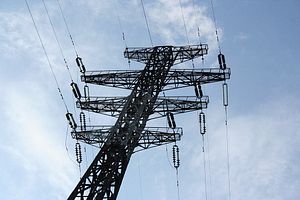For the past year, there’s been a distinct distance between the rhetoric surrounding the Central Asia South Asia Electricity Transmission and Trade (CASA-1000) project and the unfurling realities on the ground. Regional officials, most especially within Tajikistan and Pakistan, have heaped continued praise on the project, and have found themselves supported by voices from Washington and the World Bank. Foundation stones had been laid. Financial backing appeared lined up. Judging by the effusive praise from officials alone, it’d be easy to think that CASA-1000 had left all obstacles behind, forging ahead in the pursuit of the halcyon “connectivity” the project promised.
Beyond the rhetoric, though, it was increasingly clear that such praise existed in a world apart. Security in Afghanistan, supply from Kyrgyzstan, organizational efforts on every end — the issues for CASA-1000 compounded one another, piling up and reinforcing concerns. The discrepancies between theory and practice yawned, stretching further as the deadline for completion approached. CASA-1000 — like its infrastructural cousin, the Turkmenistan-Afghanistan-Pakistan-India (TAPI) pipeline — saw its potential for completion decline with each passing month.
It’s getting increasingly difficult, however, for regional officials to gloss over the difficulties pushing against CASA-1000. To wit, an article in Pakistan’s Tribune on Thursday dropped something of a bombshell pertaining to CASA-1000. Rather than seeing CASA-1000’s electricity exported to both Afghanistan and Pakistan, the latter will now be receiving the entire 1,300MW set for transmission. Afghanistan, the report says, has dropped electricity import plans “due to dearth of demand.”
There was little prior indication that Afghanistan would be dropping out of imports wholesale. As of yet, Kabul hasn’t commented on its move. But the news highlights how much the project — or what’s left of it — has degraded into a joint Tajik-Pakistani project. Kyrgyzstan’s inclusion in the project has, at least over the past year, become increasingly questionable, due in no small part to domestic issues with hydroelectric production. Kabul, meanwhile, was always slated to receive only about 30 percent of Pakistan’s projected intake — but now not even that will find its way to Afghan consumers.
The CASA-1000 site hasn’t yet been updated to reflect this new reality, still insisting that Afghanistan’s “fast-growing demand for electricity” all but demands the “transformative” CASA-1000’s construction. And Tajik and Pakistani officials have continued to laud the project’s potential — even discussing further expansion in the near future — as if Afghanistan’s move doesn’t indicate which way the project’s headed. Indeed, officials from both countries continue to lob 2018 as the projected completion date for CASA-1000.
Officials in Kabul, however, may finally be reading the writing on the wall, and realizing that their efforts are best spent on projects that may yet see actual implementation. The World Bank, just a few weeks ago, reaffirmed that CASA-1000 would “[a]lleviate electricity shortages in Pakistan and Afghanistan[.]” But at this point, the only shortage may be in terms of backers realizing how fruitless CASA-1000’s original design has become.
































